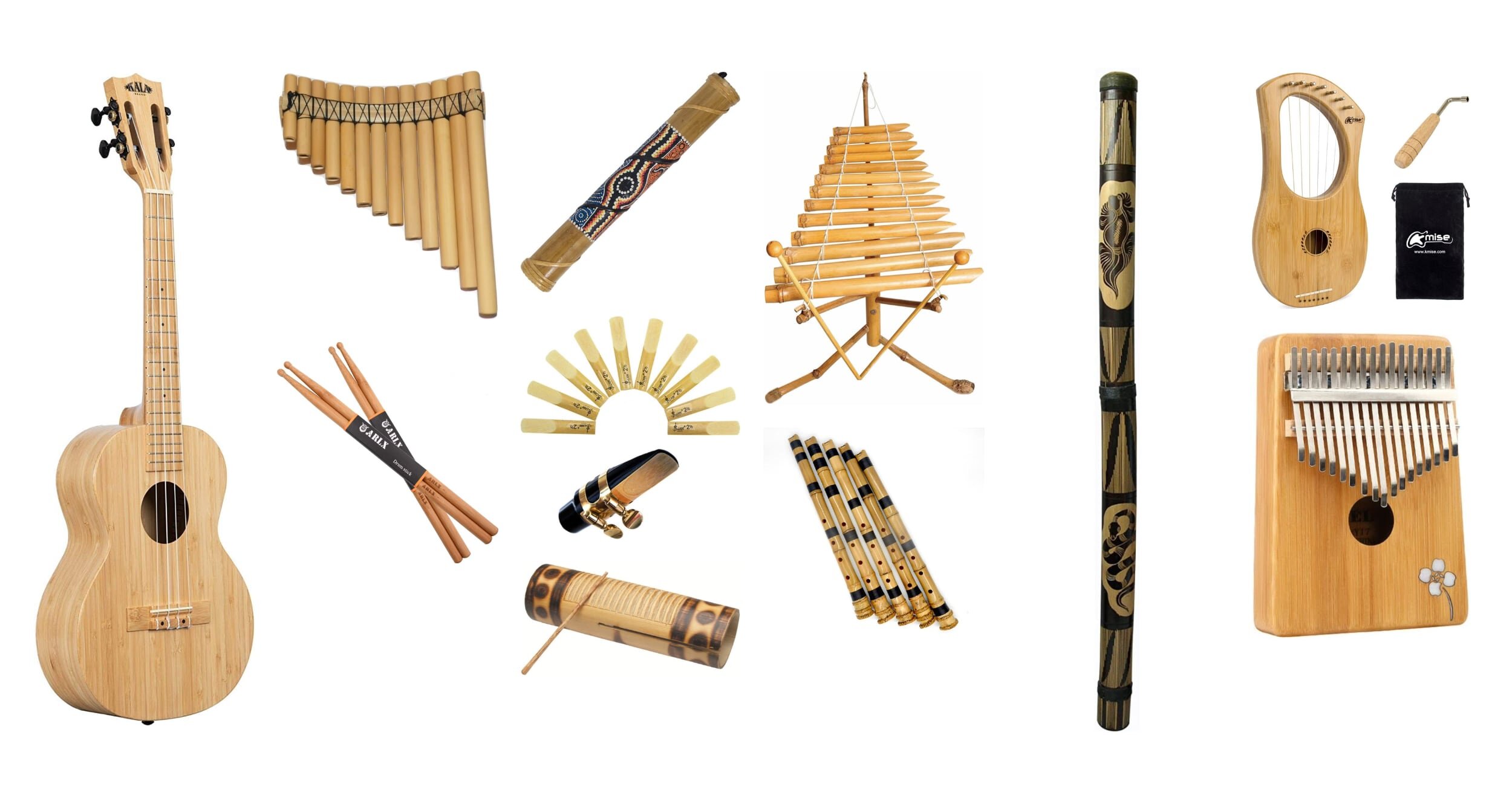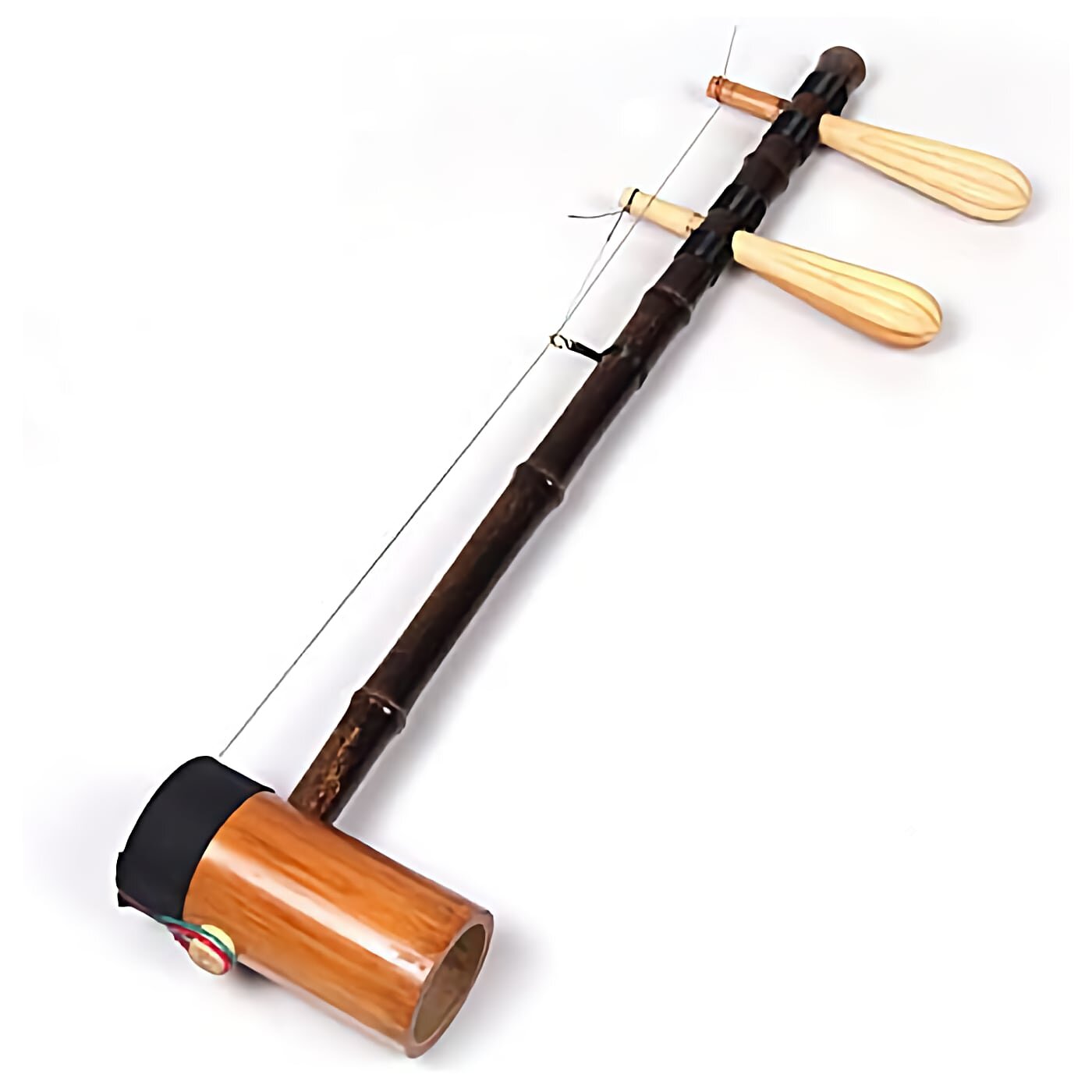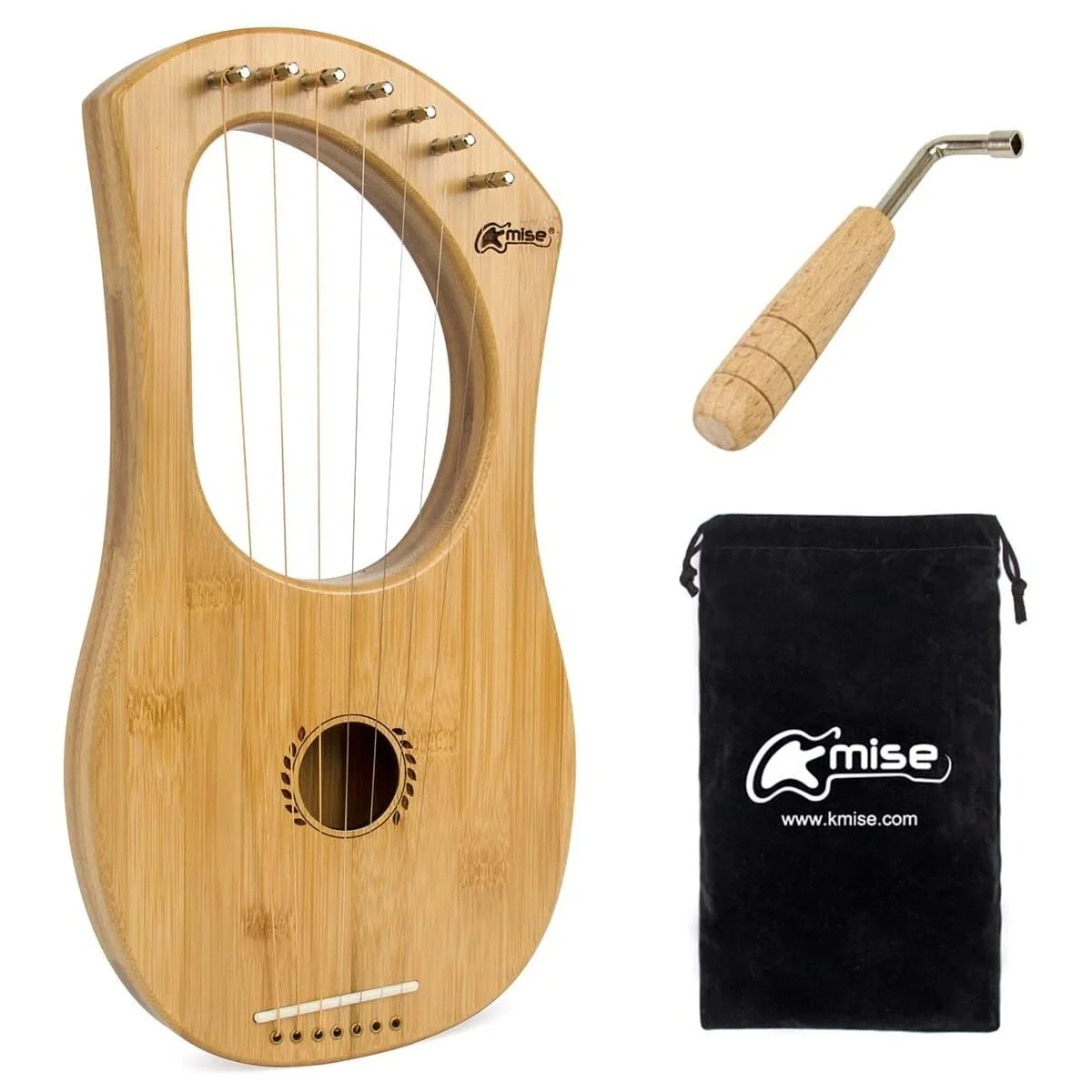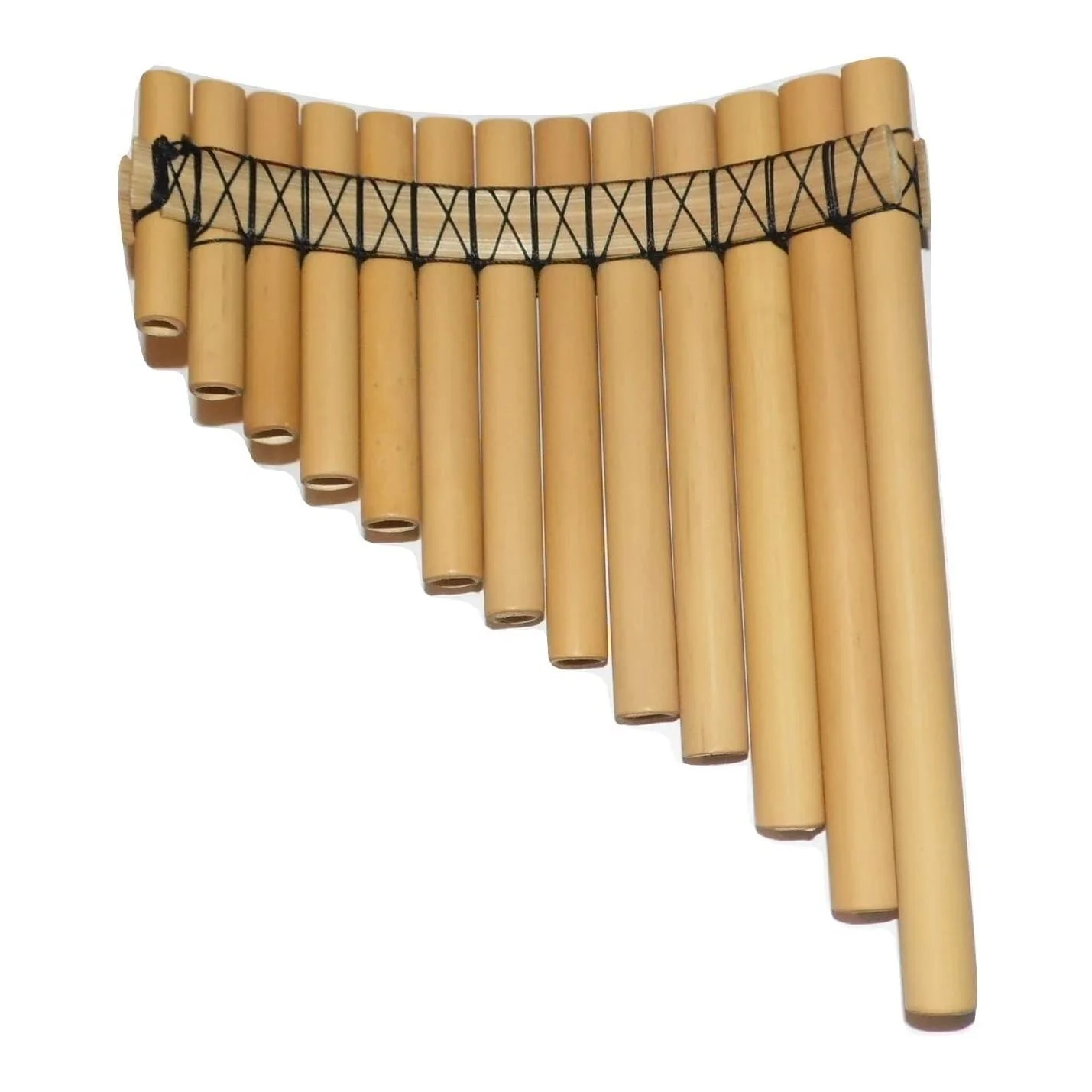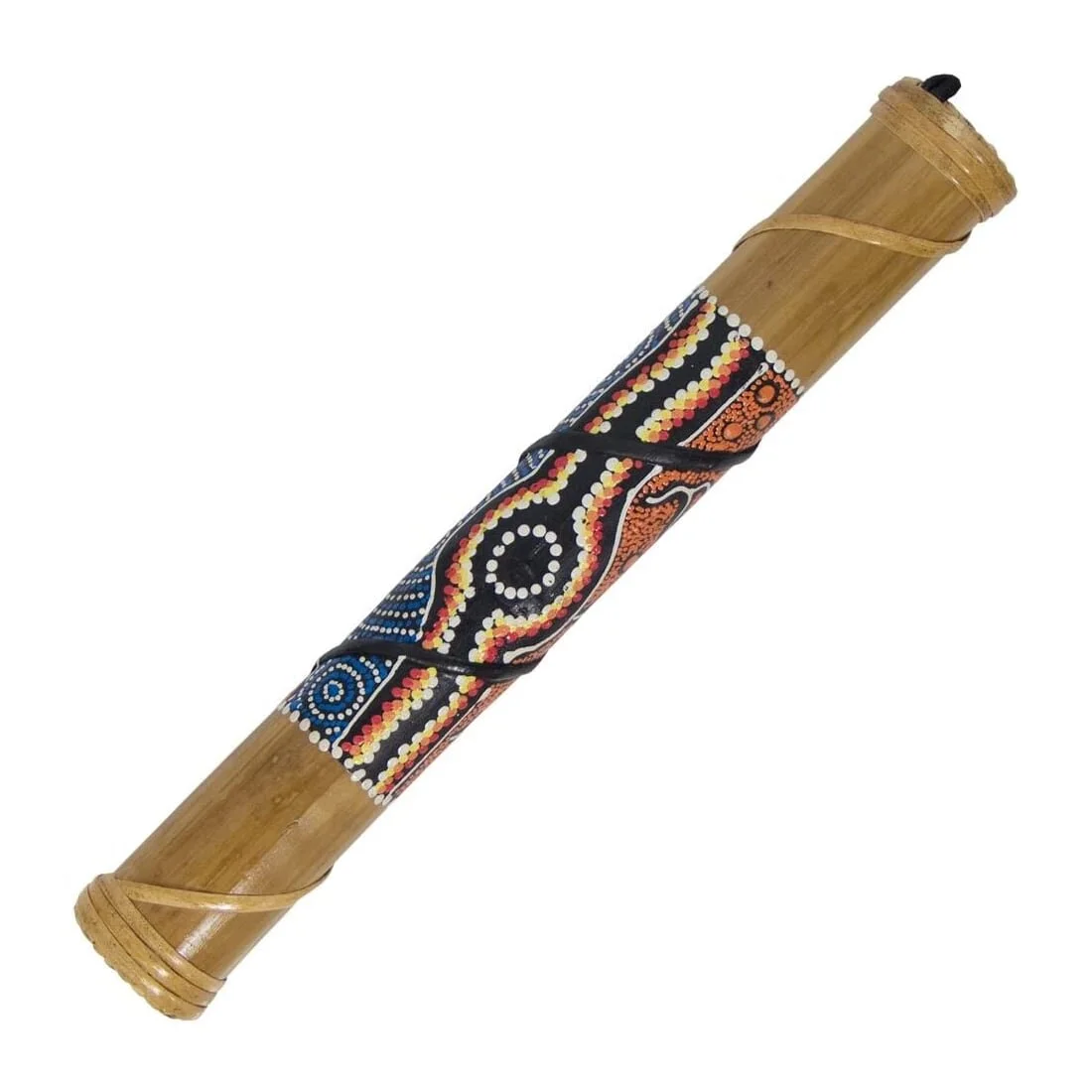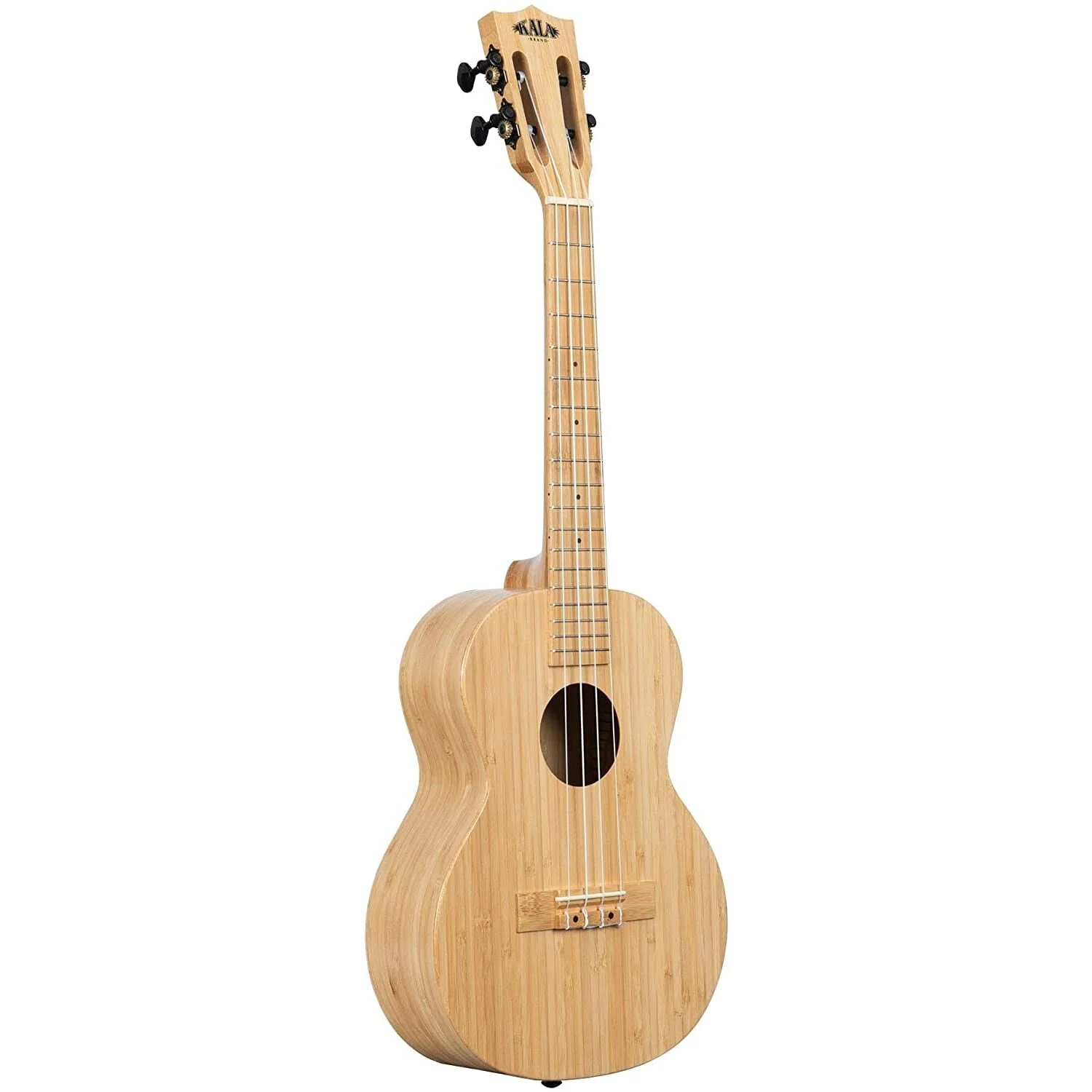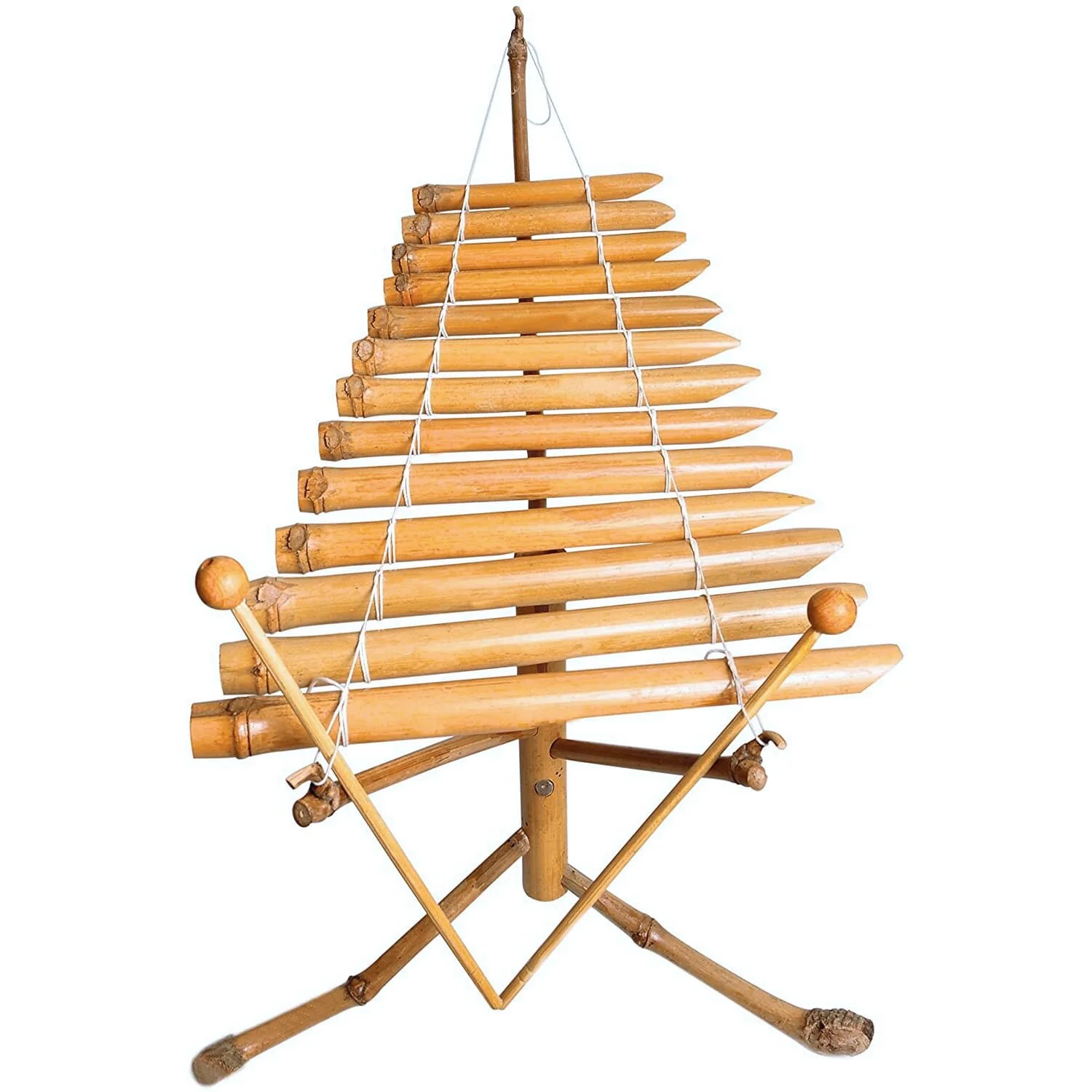Bamboo Musical Instruments
Bamboo is used to make musical instruments for thousands of years, probably as a percussion instrument at first, but later also for wind instruments and stringed instruments. Its natural hollow form makes bamboo an obvious choice for many traditional instruments such as a wide variety of flutes, but because of the excellent sound properties of solid bamboo panels it is now also used for making modern guitars.
A popular saying is that every bamboo forest hides the instruments for a whole orchestra. The list of musical bamboo instruments is indeed very long and include xylophones, rainsticks, marimbas, angklung, castanets, drum sticks, zithers, slit drums, chimes, maracas, guitars, ukuleles, violins, Chapman sticks, pan flutes, didgeridoos, pipe organs, saxophones, clarinets, kazoos, whistles, trumpets, and piccolos just to name a few.
The Jinghu is a Chinese two-stringed fiddle that is the principal melodic instrument in Peking opera ensembles. The smallest (and therefore highest-pitched) of the Chinese spike fiddles (huqin), the jinghu is about 50 cm in length. Its body is made from a bamboo tube, covered at the playing end with snakeskin. Pegs at the back of the slim bamboo neck hold the strings, which are traditionally made of silk. The jinghu is related to the larger erhu.
Like most of its relatives, the jinghu has 2 strings. The strings were formerly made of silk, but in modern times are increasingly made of steel or nylon. Unlike other huqin instruments (erhu, gaohu, zhonghu, etc.), the Jinghu it is made of bamboo.
In Peking opera, the jinghu often doubles the singer's voice. It plays in almost perfect unison with the singer, and takes a very experienced performer to handle it well.
The flute is one of the oldest musical instruments known. The oldest written Chinese sources reveal that bamboo flutes were already used in the 12th century b.c. Numerous types of bamboo flutes are still made all over the world, such as the dizi, xiao, palendag, jinghu and shakuhachi.
Bamboo flutes are common in places with easy access to bamboo, including Asia, South America, and Africa. In the Indian subcontinent, it is a very popular and highly respected musical instrument.
The traditional Japanese Shakuhachi end-blown flute, shown on the left, is made of Madake bamboo (Phyllostachys bambusoides). Madake is very suitable for flute making as it is a dense bamboo species. Fine tuning the bore and adjusting the sound of a bamboo flute, however, is a delicate art.
The sound of the bamboo flute leads the mind directly into spiritual thought. It is mellow, soul-healing and reflects the many voices of nature. By various fingerings, and by controlling the angle of the mouthpiece against the lip, all twelve tones of the western chromatic scale can be produced with this Shakuhachi flute.
The lyre is a string instrument known for its use in Greek classical antiquity and later periods. The lyre is similar in appearance to a small harp.
Playing the lyre was an important way for students of ancient Greece to study music and poetry. In Ancient Greece, recitations of lyric poetry were accompanied by lyre playing.
All of the Lyre have one thing in common, which is to liberate the pure tone from the materialized instruments and materials. When you gently tap a string, it creates a continuous whistling effect within the space. This pure sound, free from any material, can sing and relax body and mind.
Bamboo pan flutes or pan pipes, also referred to as the syrinx, are the core instruments played in the Andes. This ancient bamboo instrument consists of 10 or more pipes in increasing lengths bound together as one wind instrument.
It is played vertically but blown horizontally across the open inner edges of the bamboo pipes. The air blown through the instrument creates a series of pulses that generate sound waves within the tubes. Each pipe is tuned to a different note for producing a wide range of sound.
A bamboo rainstick is a long, hollow tube partially filled with small pebbles or beans that has small pins or thorns arranged helically on its inside surface. When the stick is upended, the pebbles fall to the other end of the tube, making a sound reminiscent of rain falling.
The rainstick is believed to have been invented by the Mapuche and was played in the belief it could bring about rainstorms. It was also found on the Chilean coasts, though it is not certain if it was made by the Incas.
Rainsticks are usually made from several species of cactus or bamboo. They can be used as ritual or meditation tools.
The ukulele is a small guitar-like instrument, which was introduced to Hawaii by Portuguese immigrants. It gained great popularity elsewhere in the United States during the early 20th century and from there spread internationally.
The ukulele is a member of the lute family of instruments. It generally employs 4 nylon strings. The tone and volume of the instrument vary with size and construction.
A ukelele made from strong multi-layered natural bamboo is extremely durable and resilient. Bamboo also provides a bright tone with great volume, harmonics, projection and sustain.
Ukuleles commonly come in four sizes: soprano, concert, tenor, and baritone.
The bamboo xylophone, also known as T’rung, is one of the traditional bamboo instruments closely associated with the spiritual life of ethnic minority groups in the Central Highlands of Vietnam.
It is commonly played after work, during evening get-togethers around a bonfire, or at wedding parties and village festivals to accompany songs and dances.
A bamboo xylophone is made of short bamboo tubes of increasing length, with a notch at one end and a beveled edge at the other. The long big tubes give off low-pitched tones while the short small ones produce high-pitched tones. The tubes are arranged lengthwise horizontally and attached together by two strings.
A bamboo xylophone is played by direct striking using a wooden mallet or a pair of beaters. The sound is lively beautiful.

